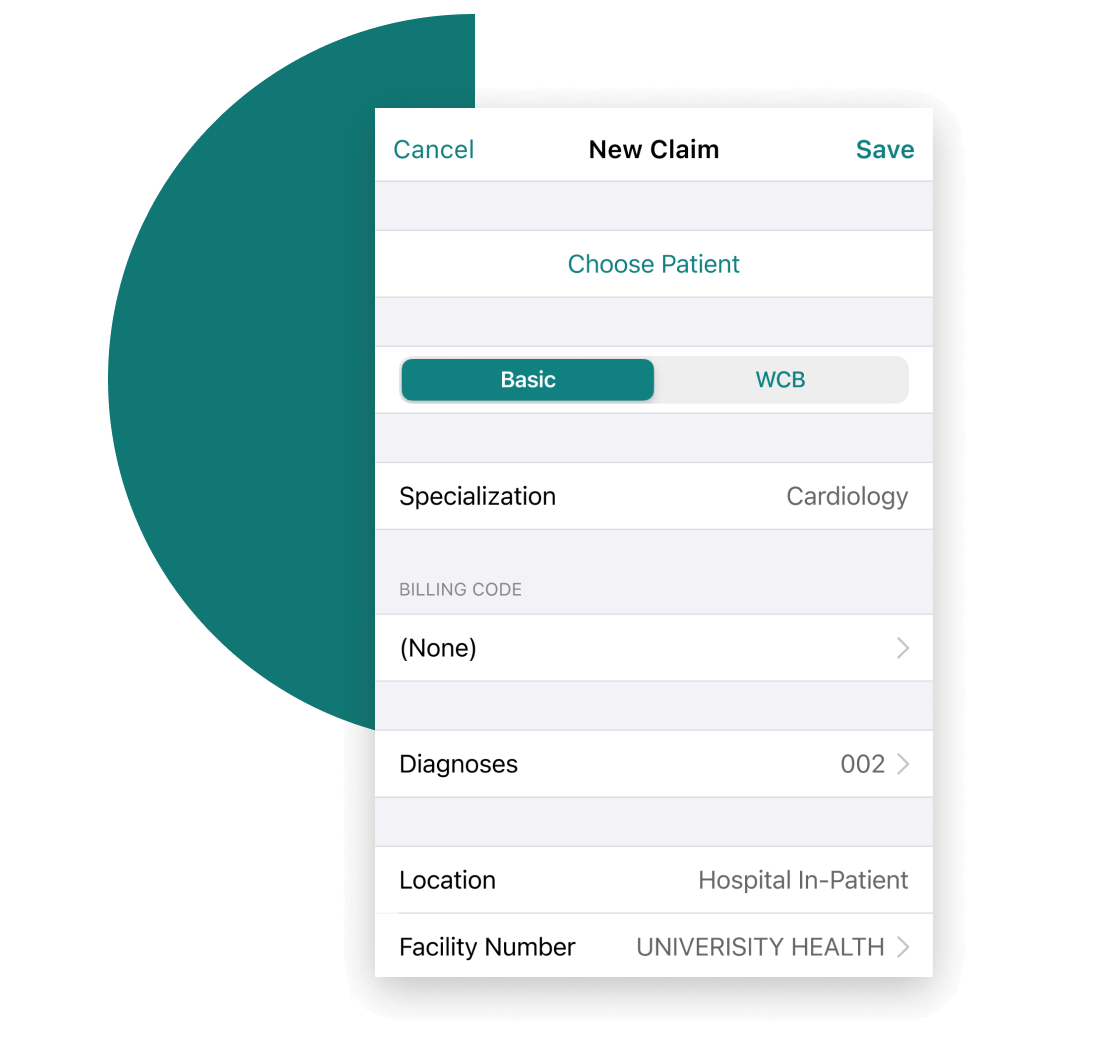During residency, the financial decisions you make can set you up for a successful future. That’s why it’s important not to procrastinate in managing your finances. Building a practical budget that you can stick to and keeping track of your spending habits from the start will help you gradually chip away at your student debt.
Being a resident is an exciting step towards becoming a full-fledged physician. Your hard work and passion for medicine have paid off, bringing you to this amazing new place in your career and life: training for your specialty. In residency, you’re gaining more confidence and responsibility, you should be able to admit, treat, and discharge patients and best of all, you start earning a salary.
Unfortunately, that resident compensation is relatively low, given the high demands of the rigorous job. While your salary is negotiated by the residency association and determined by both your postgraduate year and the province you’re working in, the average residency salary in Canada is $57,915 per year (or $29.70 per hour). This is where developing strong financial management skills comes in handy. Being able to manage and understand your money will help you pay off your debt quicker, progress toward your financial goals, and practice healthy spending habits. Keep reading to learn some smart financial management tips to get you through residency.
1. Review your salary and expenses
Start by having an accurate concept of what you earn and what you spend. Look over your paychecks so that you know exactly how much you’re earning every month after federal and provincial taxes, employment insurance, and Canadian Pension Plan/Quebec Pension Plan premiums.
After you’ve figured out what your income is, review your bank statements by making a list of all of your expenses, including essential and non-essential costs. It’s additionally helpful to identify which expenses are fixed and which are variable.
Essential costs will include your monthly minimum student loan payments, rent, utilities, groceries, transportation, and any medications you may be taking. Non-essential costs could include things like entertainment, gym memberships, or dining out. With this information, you can start developing a budget to help you set up which areas you’d like to spend, and which areas you’re okay with saving.
2. Create a budget
Staying on track with your spending requires being disciplined to stick to a monthly budget. A recent study from the Financial Consumer Agency of Canada showed that people who use budgets have significantly better finances. They were able to pay off their debts faster, develop emergency funds, and increase their long-term savings.
Start by adding up your essential expenses to know the minimum amount of money you’ll have to set aside every month to cover your basic costs of living.
After you have that number, subtract the essential expenses number from your total monthly income. The amount of money left over will determine how much you can put toward savings and optional spending. Generally, it’s recommended to put 20% of your income toward savings in the case of emergencies, but you might want to set aside even more money if you’re saving for a big investment like a wedding or house. For many physicians, the transition from medical school to residency coincides with these types of expensive life events which often means racking up more debt. This is another reason why creating and using a budget is a great way to have a clear road map to planning your future finances.
Next, depending on your salary and savings goals, you’ll either have a nice chunk of change left over, or not so much. Whatever the amount you have, decide what you’d prefer spending it on — whether that’s entertainment, shopping, or activities with friends — and set practical limitations on that spending.
For example, an R1 resident in Ontario’s monthly budget may look something like this:
| Income=Residency after tax | +$2,750 |
| 240k 30-year mortgage 2.79% interest | -$900 |
| Property tax, home insurance | -$300 |
| Utilities, cell phone, internet | -$300 |
| Car (gasoline, parking, tickets, oil) | -$300 |
| Food and clothing | -$500 |
| 180k debt interest prime 3% | -$450 |
3. Develop a plan for debt
Each year, almost 3,000 students enter Canada’s 17 medical schools. They dream of improving the world through their practice of medicine. Sometimes that dream hasn’t factored in the high price of becoming a physician. According to the Association of Faculties of Medicine in Canada (AFMC), the average student loan debt for doctoral degrees is $100,000, with 13.6% of students graduating with over $200,000 of student loan debt. Add this on top of undergraduate debt — $28,000 for the average Canadian university graduate — and you’re left with a substantial sum you’ll probably need to start making payments towards after you’re no longer considered a student. It’s not surprising to anyone in residency that debt is a massive cause of stress. Residents have levels of high debt that are rising continuously, and less job security as employment and career opportunities are increasingly harder to secure. Training barely discusses money, and income and debt management are hardly mentioned in medical school curricula.
Having a plan for how to pay down your debt after residency will save you time, stress, and money. Checking your loan’s principal and interest rates will help you to know how much you can afford to pay off every month realistically. Even paying 10% over the minimum payment could end up saving you thousands of dollars in interest in the long run and help you get rid of your debt sooner. The interest rate is usually reported as an annual percentage rate, which basically means how much interest you pay in the course of a year. The standard rate for a professional line of credit (LOC) is currently prime minus 0.25% (pro tip: Call your financial advisor to make sure you’re getting this rate from your bank). ‘Compounding’ is how often interest is applied to your loan, and the more often it is compounded, the higher the interest you owe. For residents, interest is calculated daily, compounded monthly, and automatically added to your principle rate. This means the daily accrued interest (or principle) will keep increasing every month you’re not paying off the principle or any interest. For example, if you spend $2000 on a vacation at the end of your first year in medical school, you’ll end up paying more than $2600 for it by the time you finish residency. If that doesn’t sound like a lot, consider if your LOC were at $200,000, that amount stacks up significantly as the interest rises over time.
How can you use this information to your advantage? Compound interest affects your finances the most if you can’t pay interest payments, and you end up taking more money from your LOC to pay that interest. This becomes a problem in medical school when you’re unlikely to have an income, so everything comes from your LOC. Once you become a resident, try to get as many funds onto your LOC as you can to lower the total daily interest accrued against you.
Another helpful recommendation is to consolidate debt where you can. After all, a penny saved is a penny earned. It’s recommended for any resident who has multiple types of debt to put ‘all their eggs into one basket’ – the basket being the lender with the lowest interest rate. Government loans are currently charged at prime plus 1.0-2.5%, while LOCs are prime minus 0.25%. Moving all your debts over to your LOC as soon as possible will benefit you in the long run.
Review your budget regularly to see if there are any areas where you can cut down on your spending. Perhaps 10% for your loans can be taken from a monthly skincare subscription box or video game allowance, for example. Or maybe you can cut meal costs for a few months by cooking dinner at home more often. Cutting down on your spending may take some creativity and sacrifices in the short term, but having a plan — even a loose one — will help you take steps forward and avoid unanticipated financial setbacks in the future.
4. Automate payments
When you’re in residency it’s helpful to simplify as many aspects of your life as you possibly can, especially your finances. Get started by establishing automated online bill payments where possible, such as for your utilities and loans. This way you won’t have to remember to write and mail checks, avoiding the possibility of late fees in case you forget or are late on a payment. Then, set up an automatic deposit to your savings account or use your bank’s saving tools like RBC NOMI Find & Save to encourage you to put a designated percentage of your monthly income towards your savings account. If you implement a saving habit like this sooner rather than later, you’ll never miss having the money and will have a pleasant surprise waiting for you later.
Free digital tools – like RBC NOMI Insight – can help you track your spending, assess your spending habits, and help you stick to your monthly budget.
If it feels overwhelming, know that you’re not alone. All successful physicians have been in your position at some point on their path. Planning ahead for your financial future will save you a lot of time, money and stress. Taking these tips into consideration, you’ll be on your way to success, financial goals within reach, changing the world as you go.

Solutions Designed For The Unique Needs Of Your Practice
Get a $150 Credit when you sign up for Dr.Bill*. No credit card required.






